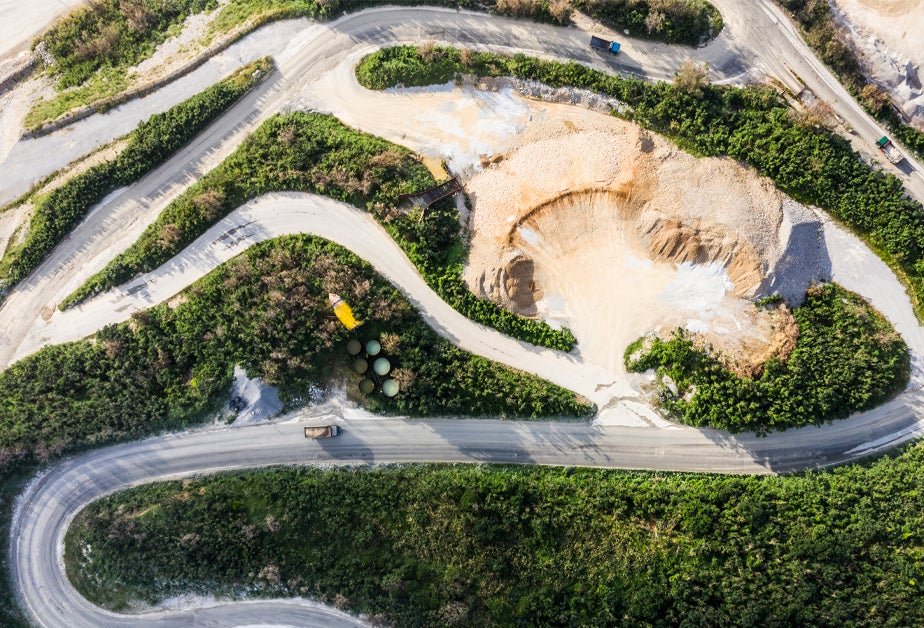In November 2022, I traveled to Kolwezi in the Democratic Republic of the Congo (DRC) with the Fair Cobalt Alliance where I saw firsthand the impact mining has on communities and the urgent need for responsible cobalt sourcing — you can read the article I wrote about it here.
For this article, I’m joined by Daniel Zamora Martinez, a leading expert on responsible mineral sourcing. He is also the industry’s only known smelter library manager. With a mind full of questions fresh off my trip to the DRC, I sat down with Daniel to get his thoughts on responsible minerals topics, including how it has grown in the past decade and what its future looks like. I wanted to gain a greater understanding of the relationship between mineral supply chains and corporate environmental, social, and governance (ESG) management.
Responsible Minerals Q&A
Jamie: Can you explain the difference between conflict minerals management and responsible sourcing?
Daniel: Conflict minerals management was widely adopted in the industry after the inception of Section 1502 of the Dodd-Frank Act, and the term “conflict minerals” itself is associated with the first batch of minerals — tantalum, tin, tungsten, and gold (3TGs) — that were found to have ties to armed conflict in the DRC and adjoining countries. Responsible minerals, on the other hand, has a broader scope of minerals and geographical areas and is generally a more progressive term that better represents today’s market expectations. Responsible sourcing emphasizes that there’s a right way to engage with supply chains and stakeholders that is more sustainable.
Responsible sourcing applies to all levels of the supply chain, from the miners extracting the minerals from the earth, to traders and smelters moving the minerals through the supply chain, all the way to suppliers and downstream companies making use of the minerals in their manufacturing processes. All players in the industry are responsible for properly engaging with their stakeholders in a way that promotes responsible sourcing practices.
Jamie: A lot of companies and consumers confuse “conflict-free” and responsible sourcing. Can you shed a little more light on that?
Daniel: The term “conflict-free” can definitely cause confusion, as some companies think it is the end goal of sustainable mineral sourcing. But as the market continues to mature, we’re waking up to the fact that conflict-free is just one piece of the puzzle. In fact, I’d argue it’s the starting line, not the end goal at all. Stakeholders don’t just want products to be free of conflict and forced labor, they want them to be sustainably sourced so we don’t have to worry about supply chain disruptions or suddenly losing access to a vital resource when regulations change.
In addition, “conflict-free” can give people tunnel vision on the DRC, since this is where conflict mineral regulations have historically focused. However, responsible sourcing can be applied to more than just the 3TGs — for example, cobalt — so there’s a risk of developing blindspots if we let “conflict-free” be our guideline.
Learn how Corsair Gaming Inc. used Assent to embed ESG strategy into its mineral sourcing management. Download the Corsair case study.
Jamie: What type of key performance indicators (KPIs) can you track for responsible sourcing, and can companies use their conflict minerals programs to support it?
Daniel: The conflict minerals data collection methodology, the Conflict Minerals Reporting Template (CMRT), has existed for approximately 10 years, with thousands of companies engaging in the process. It allows stakeholders to collect data about minerals across the supply chain, including mineral country of origin, and the smelters and refiners involved. Conflict mineral reporting leveled the playing field for reporting and assessing companies by increasing transparency, and as a whole, the most vulnerable players in the supply chain are able to benefit from stronger enforcement. Conflict mineral regulations put more burden on companies, but helped mitigate ESG issues at the source.
During the first years of Section 1502 of the Dodd-Frank Act, downstream companies and the market overall had the presumption that risk disengagement was the proper step to take in relation to armed conflict and the DRC.
As stakeholders started to dive deep into the subjects and studies highlighted the adverse effects of the regulation on mine operations in the DRC and surrounding areas, a stronger push arose to move away from risk avoidance and focus on risk management and engagement. This is what we call responsible sourcing.
Responsible sourcing asks companies to take this methodology a step further. It’s applying ESG metrics to mineral sourcing reporting, going beyond the baseline requirements established by Section 1502 of the Dodd-Frank Act. For example, how is the environment around the mine impacted? How is the local community’s economy affected? It’s not just about if workers are working of their own volition — responsible sourcing checks if those workers are better off for their labor, working safely, and growing community health.
A lot of manufacturers panic when we start talking about responsible sourcing because it seems like a lot of data, and they don’t know where to start. But if you’re using the CMRT, you’ve already got the methodology in place. Start expanding those surveys by supplementing them with ESG-based questions and educating your suppliers about the larger ESG story.
Jamie: Speaking of educating suppliers, what can companies do to improve their supplier intelligence and supplier development around responsible sourcing?
Daniel: During the inception of the Dodd-Frank Act, it was more of a data collection exercise completed in silos, which was expected given it was a new initiative. But as companies started to gain some transparency into their supply chains, they started to realize how connected they all are — especially since mineral resources are limited and concentrated in certain parts of the world.
In order to better connect with your suppliers and ESG footprint, you need to get data that allows you to not only identify risks proactively but also manage those risks with suppliers as partners. What better way to manage those risks than having the ability to communicate those risks back and forth with relevant stakeholders? Using downstream companies as our example, smelters and refiners are a pinch point for ESG risks in mineral sourcing, so we need to use risk data disclosed by suppliers. The more comprehensive the smelter risk data is, the better our supplier assessment for responsible sourcing will be. And the more educated your suppliers are about ESG, and your corporate goals, the better partners they can be. In this case, knowledge is power.
There are still improvements to be made. Digging deep into supply chains is still a cumbersome task for companies given the complexity of today’s supply chains. If the goal is more comprehensive data, we must start looking beyond the industry standard tools. There are supply chain sustainability solutions available that can help manufacturers start asking the right questions and automate a lot of their outreach efforts.
Jamie: What’s next on the horizon? Are there new conflict mineral regulations companies should keep an eye on?
Daniel: The next logical step in the industry is for regulations to catch up to market expectations during the next wave of regulation reviews. We saw this with the introduction of the EU Conflict Mineral Regulation, which expanded the geographical scope from just the DRC and adjoining countries, as stated in Section 1502 of the Dodd-Frank Act, to all possible conflict-affected and high-risk areas globally. I’m predicting we’ll see the same scope expansion of risk factors, from sourcing and armed conflict to ESG.
The EU Conflict Mineral Regulation is up for review this year, and there are suggestions in the U.S. 100 days supply chain document that call for a review of Section 1502 of the Dodd-Frank Act. So I suspect we’ll continue to see shake-ups in mineral sourcing, and all of this will continue to be informed by ESG pressures in the market and from regulators.
Putting Responsible Sourcing Into Action
The biggest obstacle to manufacturers being able to make informed risk management and responsible sourcing decisions is a lack of accurate and reliable data. Tools like the CMRT make it easier to get visibility into your mineral supply chain. Still, it alone is not enough to get the deep transparency needed for a full responsible sourcing program.
Assent’s supply chain sustainability solution streamlines your CMRT outreach and gives you ESG surveys to build the foundation for a broader sustainability program. To learn more about how to improve your conflict mineral program and how mineral sourcing is evolving, check out our guide, Dig Deeper: Building a Conflict Minerals Program for Today’s Risk Landscape.









